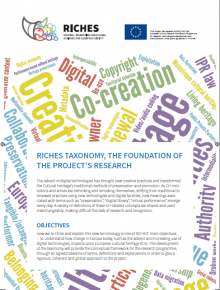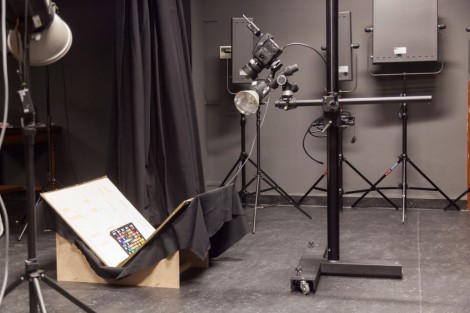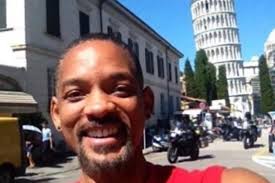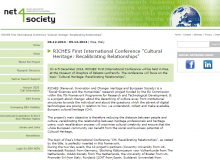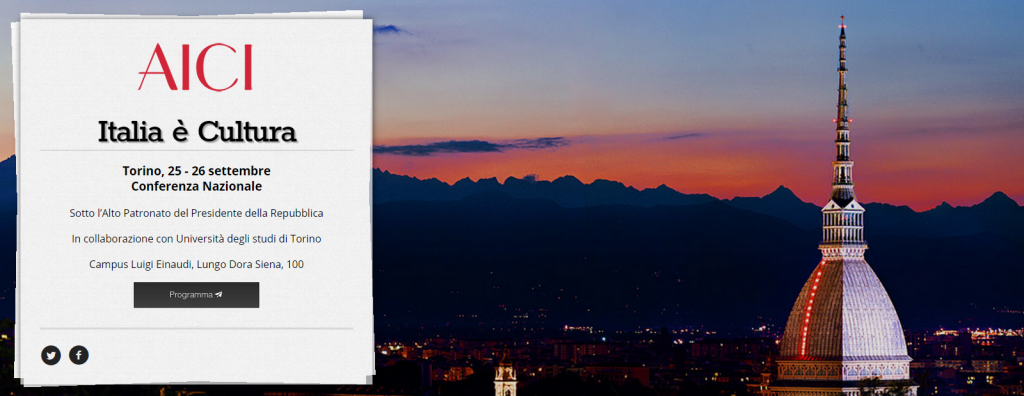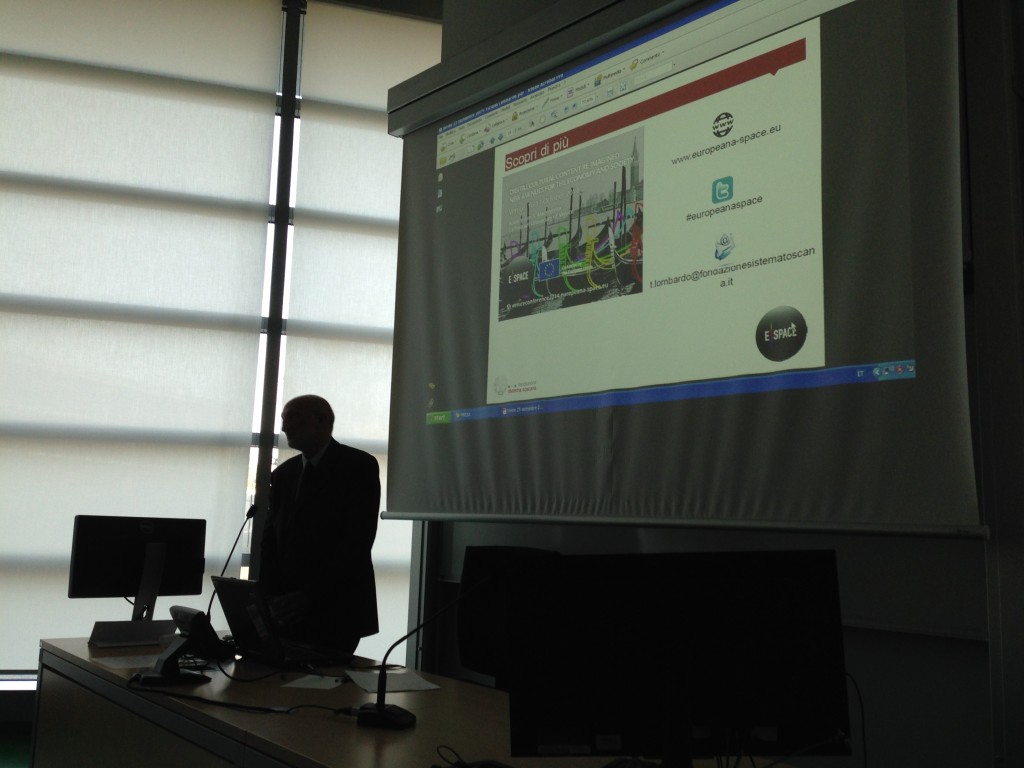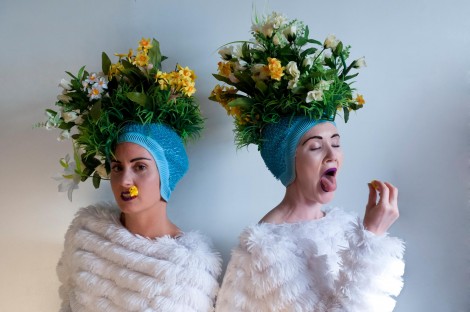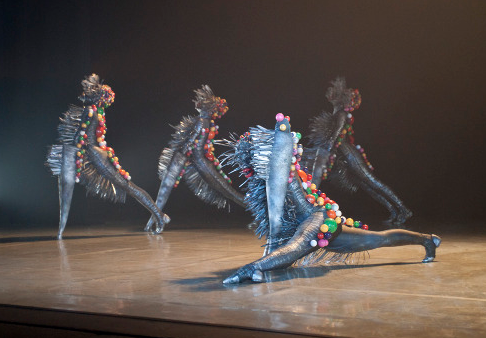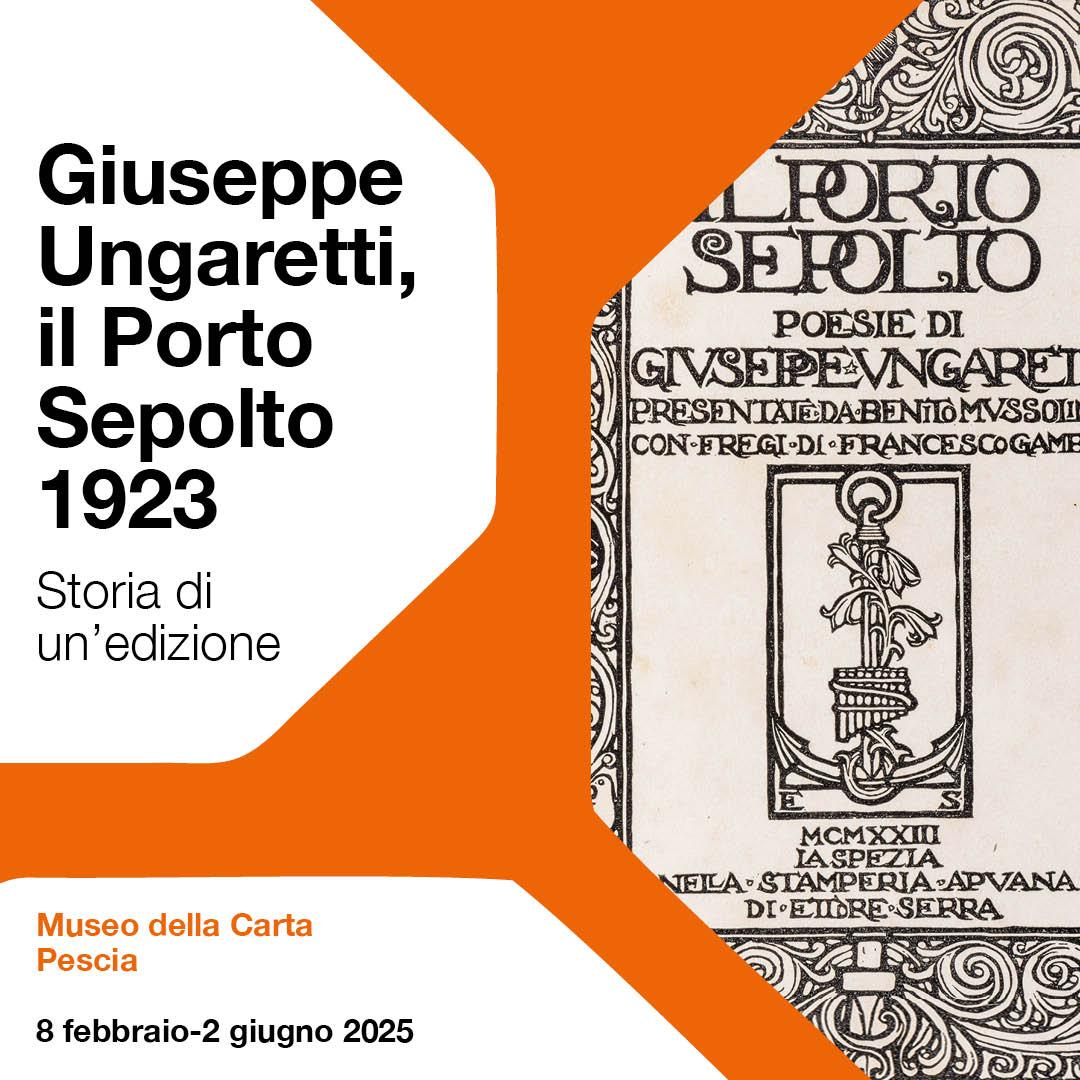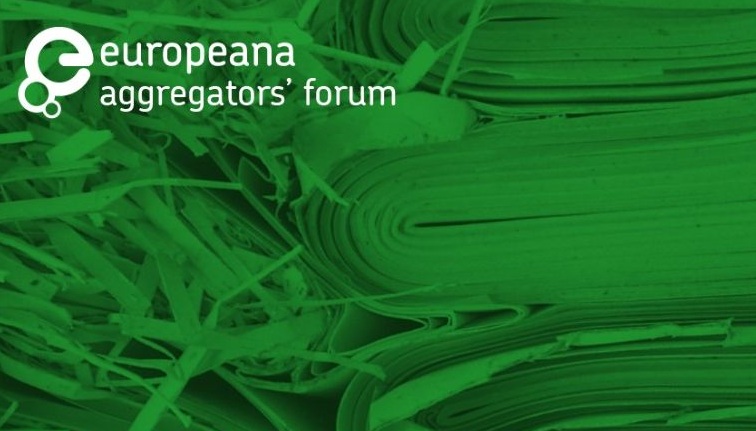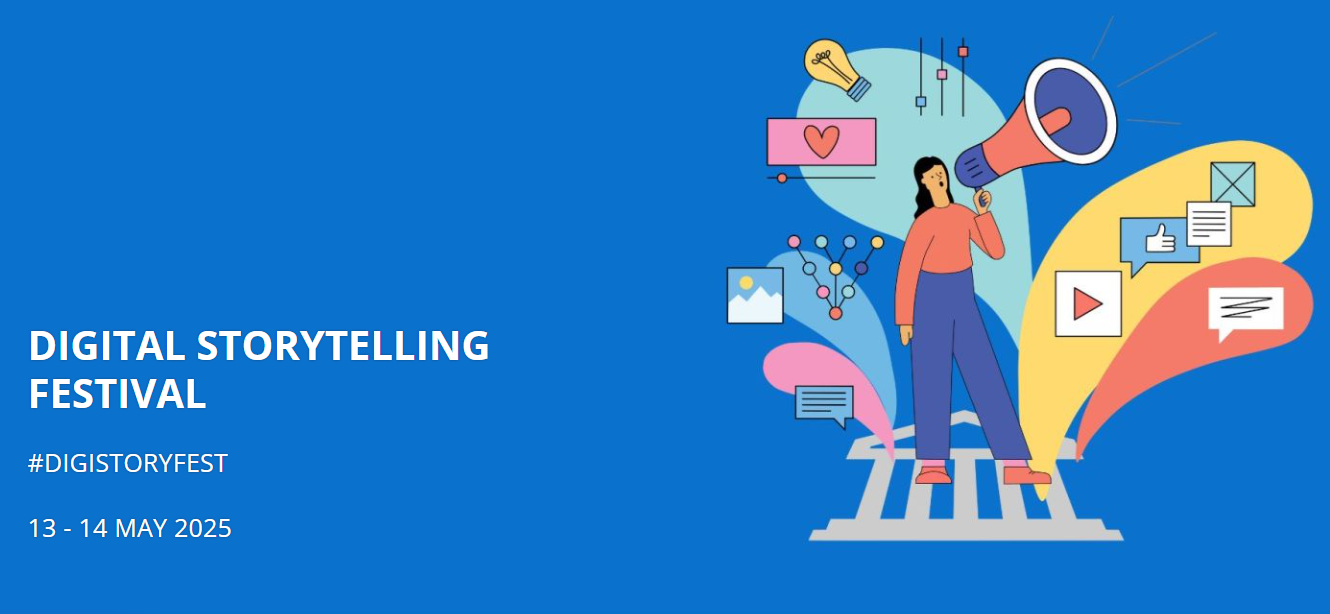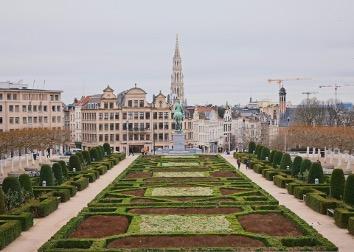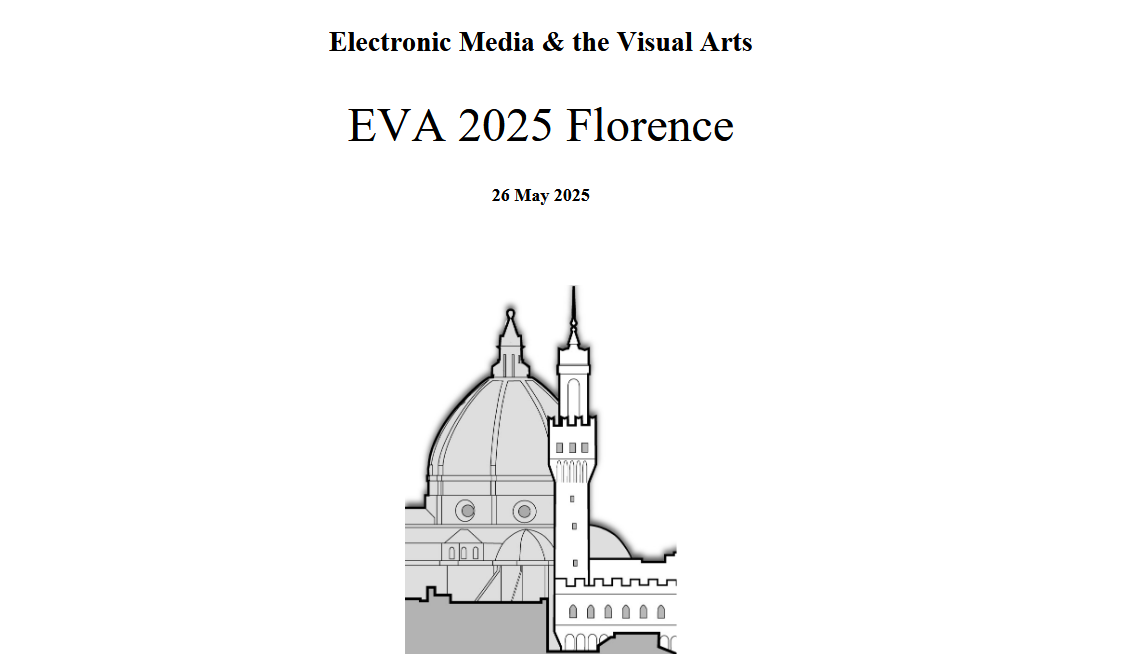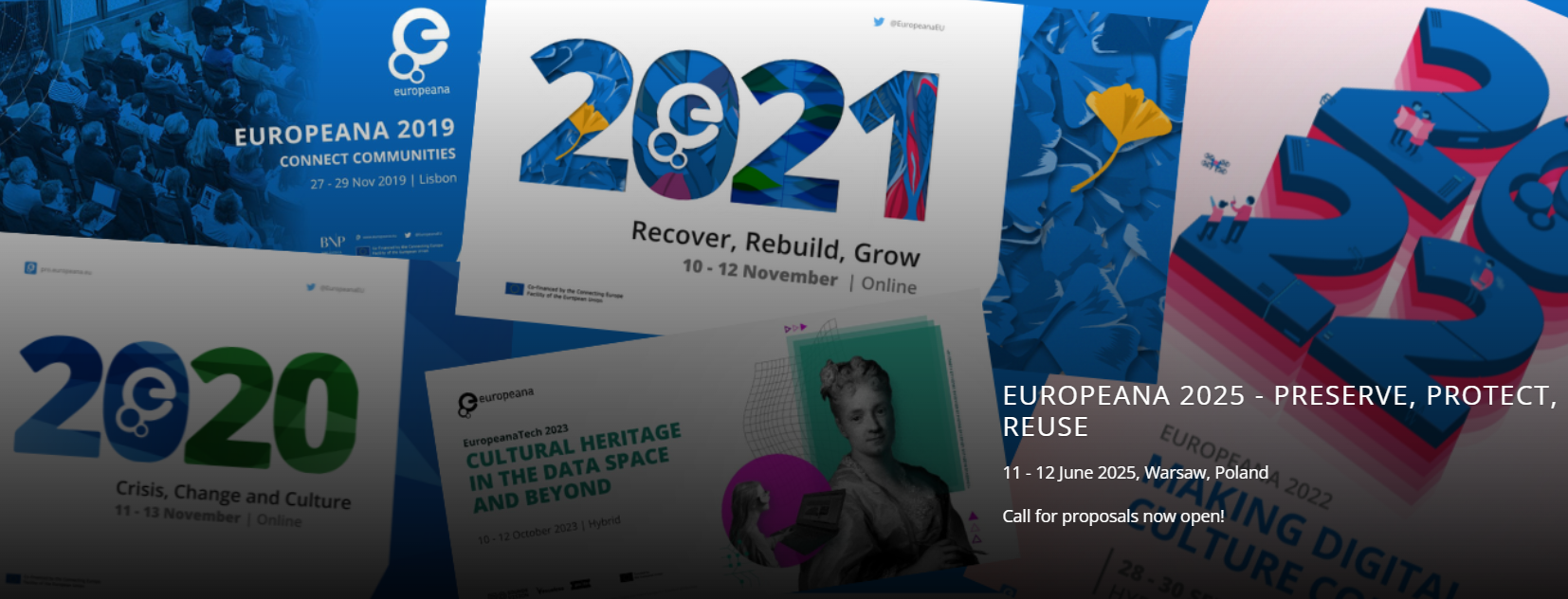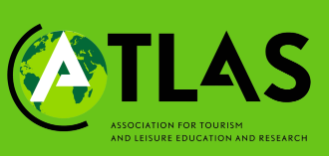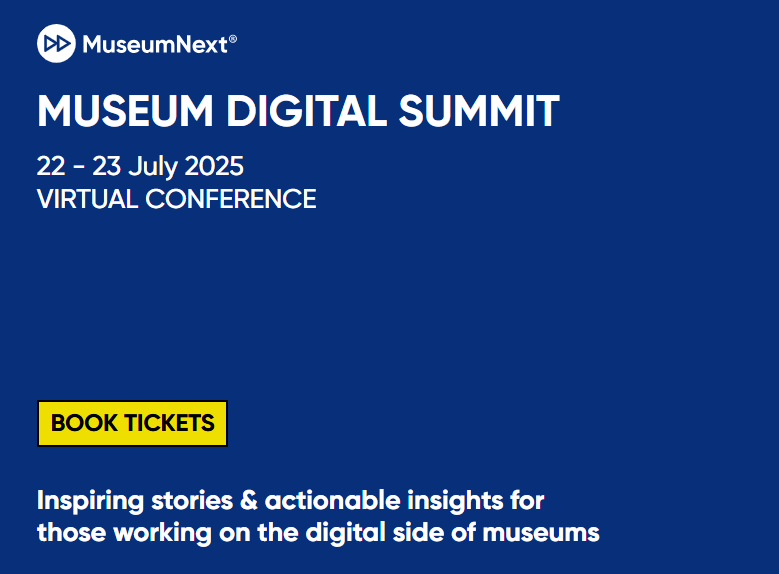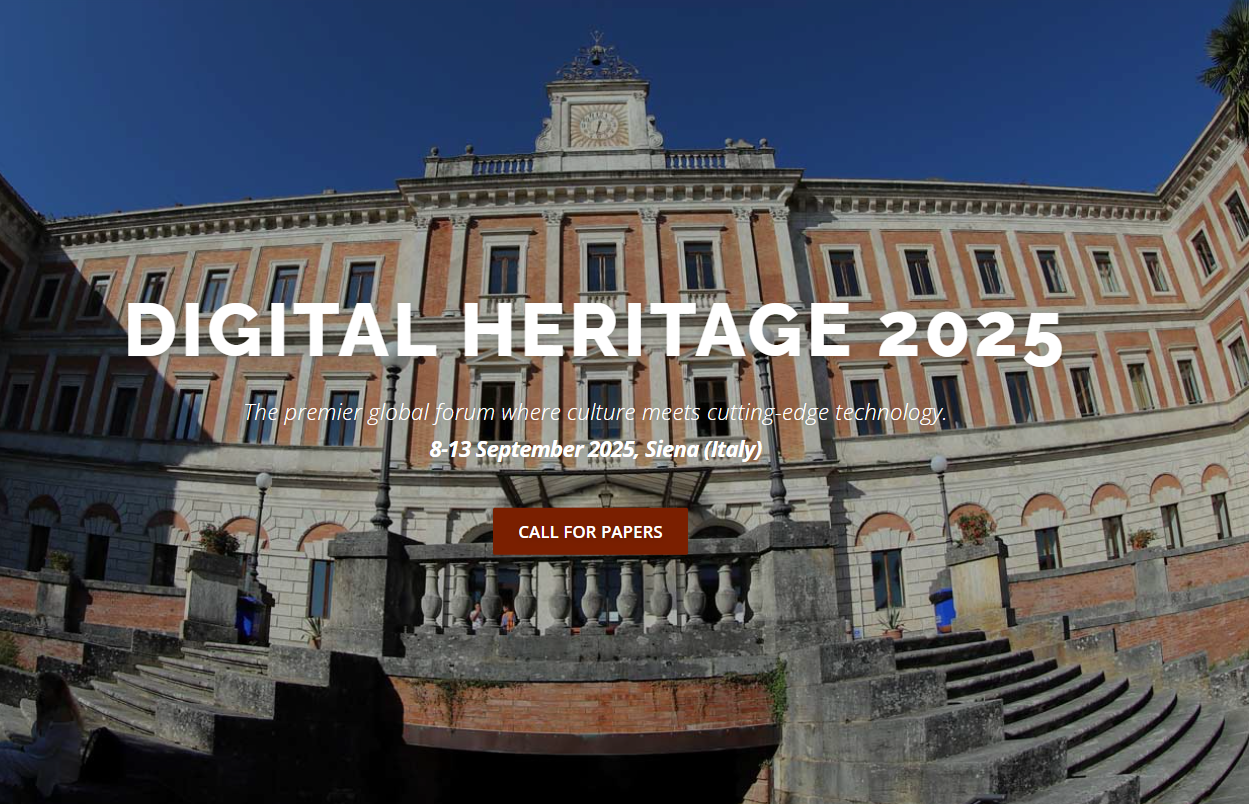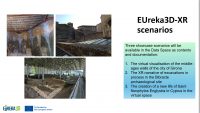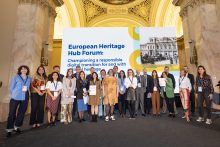-
Join the
Digital Meets Culture
Newsletter! -
Join the
Digital Meets Culture
Open Newsroom! If you have interesting news and events to point out in the field of digital cultural heritage, we are waiting for your contribution.
If you have interesting news and events to point out in the field of digital cultural heritage, we are waiting for your contribution.
-
Free text
-
-
Upcoming events
-
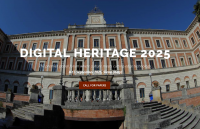 Siena (Italy), 8-13 September 2025
Siena (Italy), 8-13 September 2025 As the leading global event on digital technology for documenting, conserving, and sharing heritage—from landscapes and monuments to museums, collections, and intangible traditions—the Digital Heritage International Congress offers a unified stage for major world conferences, workshops, and exhibitions. … Continue reading →
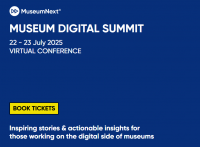 online on 22-23 July 2025. The deadline for proposals is 31 March 2025.
online on 22-23 July 2025. The deadline for proposals is 31 March 2025.The Museum Digital Summit will take place online 22-23 July 2025. MuseumNext is a global conference series on the future of museums. Over the past 12 months the events have brought together more than 20,000 museum professionals for their … Continue reading →
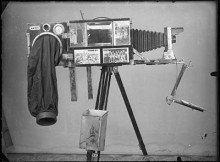
by Sofie Taes, KU Leuven
Thanks to the digitization work of libraries, museums, archives and other collection owners throughout Europe, and to online data sources such as Europeana and Flickr Commons, nowadays a vast number of photographic images of high historical, artistic and cultural heritage value has become widely available. In contrast to other and older images on the web, those made accessible by portals such as Europeana can be guaranteed to be authentic, unaltered and correctly digitized renderings from trusted sources.
Now why not combine the qualities of such photographic treasures with the dynamics of current photographic practices – think: the selfie, or other types of user-generated content by which billions of people feed the web on a daily basis…?
With the Photography Pilot, we’re definitely in for the mix!
We want to demonstrate a range of possibilities offered by apps, Europeana API’s, and a multitude of tools developed by the open source community, to come up with innovative models involving historical and present-day photography, boasting with monetizing potential and investment appeal!
Specific demonstrators running along 3 scenario’s, will help create new ways to interact with our visual past and present. We endeavor for users worldwide to explore these new tracks of engaging with their personal and shared history, and to rediscover the world of their ancestors in a dynamic dialogue with their own day-to-day reality. Moreover – as this is the ultimate “Return on Investment” for any digitization effort – Cultural Heritage Institutions will hereby be able to engage with their public in novel ways.
In the hackathon that will be organized against this backdrop, developers with a pedigree in producing innovative applications involving cultural photographic heritage will meet, exchange ideas and look for commonality and interoperability to build larger functionalities.
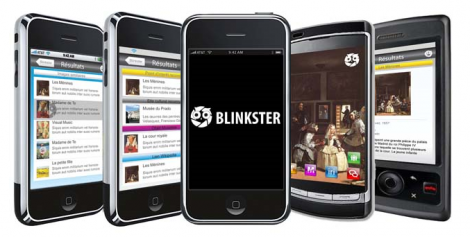
a Blinkster app will be used to experiment within the Photography pilot
The featured applications will be grouped around 3 ideas, qualified as commercially relevant by our market research:
- Museum applications providing access to Europeana and similar resources can yield new types of visitor-experiences;
- Storytelling web applications and apps allowing for users to create new stories by mixing historical images from Europeana and other public sources with user-generated content, will encourage a more widespread individual and joint interaction with cultural heritage items;
- Augmented reality applications enabling historical images to be layered with actual experiences and other material, such as maps and social user data, will provide a personal angle to every tranche of world history.
The best ideas and proposals stemming from the hackathon – together with a compendium – will be tunneled through a monetization event in London. Developers will be able to showcase their work to selected investors, with a real perspective to clinch a deal.
In this way, the Photography Pilot will contribute to Europeana Space’s main goal: to demonstrate, by means of actual, funded and innovative applications hitting the market in all the right spots, that for the creative industries, open cultural heritage can be the fabric added value in the digital economy is made of.
Learn more about the Photography Pilot on Europeana Space’s website
photo source: courtesy of KU Leuven, and Internet
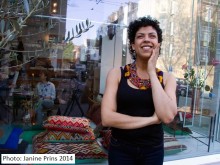
In 2010 I stumbled upon a nice topic for a documentary film or so I thought – Janine Prins writes. Now, four years later, the original plan has developed into a research project using digital technology and design thinking. Together with Dutch-based partners Waag Society and Rijksmuseum Volkenkunde it became embedded in a larger consortium under the acronym RICHES. Let’s go back to where it all began…

Photo: Janine Prins 2014
When on holiday in Marrakech I visited Museum Tiskiwin and found that some Dutch students were to arrive for an internship, to investigate the Amazigh components of their multicultural backgrounds. Born in the Netherlands, from Moroccan descent, they wanted to – literally – get in touch with the world their parents grew up in. They felt part of that world, albeit too ephemeral: it had dropped out of sight due to migration. I returned during the internships, with a camera, and made sure to be filming when the mother of one of the students also came over to visit. She was invited to tell her daughter about some of the objects on display. At once, she shed many years. The objects in turn also came alive, like in the room where a tent is exhibited: the old lady immediately sat down and stirred in a bowl as if she was preparing couscous. Her body automatically remembered the accompanying movement. Latifa took a picture of her mother. Why did Latifa choose this moment to freeze? I still need to ask.
In any case it is a moment in time when cultural heritage is transmitted, elicited by material objects: stuff that disappeared from view due to migration but has fortunately been collected. Many families, including mine, are not so lucky and need to find other ways to fill various gaps in our heritages. Few of us inhabit the same world our parents lived in, but migration creates a bigger divide in time, space, and culture. Not everything will be gone: intangible heritage such as food, customs and values travel with us, although in another place they are surrounded by different heritages. Many migrants end up as ‘minority’ elsewhere.
Janine goes on, reflecting upon the condition of new generations lacking a continuity bond with their origins. The place they live in expect assimilation rather than mutual integration and their generation gap actually deepens. Part of their personal past risks remaining unknown or denied and this seems to be an important cause of chronic stress, cause in turn of psychotic disturbances. The problem can be defined as a lack of cultural self-recognition or self-identity.
Museums and museum curators can help young people to get in touch with their cultural heritage, but they surely should do more than preserve objects in glass cases. How? How can museums become more engaging and participatory?
New (media) technology and theory may come in handy, especially when combined with participatory approaches – Janine observes. Digitalisation can improve accessibility and interactive platforms (of whatever kind) can facilitate so-called third spaces or ‘living labs’. Museums may become fertile grounds for “experience curators”. In such carefully designed spaces and processes, both relative newcomers and more settled inhabitants might enter into different intercultural dialogues than they usually do.
Such are the direction explored in the RICHES project, which among its activities includes three upcoming sessions, called co-creation sessions, being held in the Netherlands in the period end of September – mid-November 2014. Such co-creation sessions aim to demonstrate how heritage professionals and users can work in strict, mutual cooperation, with the last ones becoming producers, besides consumers, of cultural contents.
This time – Janine observes – I won’t be the film director deciding who and what is being portrayed and presented to an audience. Apart from observing as a researcher at meta-level, I will at best become a fellow moderator of designed processes in close collaboration with the intended visitors. This method will be new to me and is described as users-as-designers. Will my role as a visual anthropologist change and if so, how? Will creative methods add something to the existing toolkit of anthropology? We are about to find out: let the co-creation sessions of the RICHES project begin…
Read Janine Prin’s article and visit WAAG’s blog!
 RICHES on Twitter: #richesEU
RICHES on Twitter: #richesEU
RICHES on YouTube. www.youtube.com/richesEU
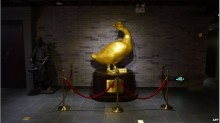
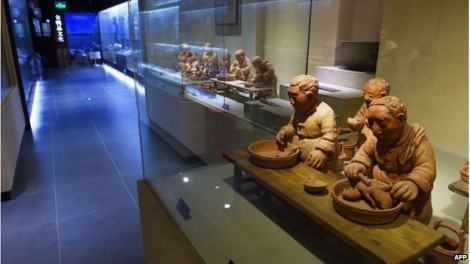
Clay models showing how to prepare the roast duck
When you think of museums in China you may have calligraphy, landscape paintings or even Ming vases in mind – Martin Patience of BBC writes – Not, I would suggest, a giant statue of a golden duck.
But one of Beijing’s latest cultural offerings is a museum dedicated to the capital’s most famous culinary dish: roast duck.
The museum, built by the well-known Quanjude restaurant chain, is most of all attended by peckish customers of the restaurant.
The exhibits include clay models showing how to prepare the roast duck, restaurant advertisements from a bygone age and various pictures of famous people – including, surprisingly, the actor Charlie Chaplin – eating Peking duck.
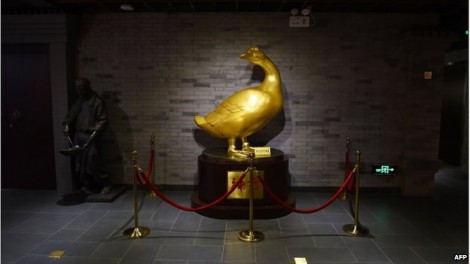
Giant golden duck at the museum
The museum is part of an astonishing building boom and is not the only one of its type: among the country, there are museums dedicated to watermelons, socks and so on.
The boom is going to continue because the funding is there and the interest is there – says Cathy Giangrande, a co-author of the Chinese Museums Association Guide – China is trying to reach the number of museums they have in the US per head of the population.
Less than 50 years ago, she observes, everything was being destroyed during the Cultural Revolution and anyone who was a private collector or had a private museum was banned. The museum building boom therefore represents a major change in the Chinese history.
Curator Cheng Guoqin says part of the reason the government supports the opening of new museums is that it improves the country’s image.
Even if the Chinese government still censors what the public can and cannot see (anything politically sensitive remains strictly off limits) but in terms of choice the average Chinese museum visitor has never had it so good.
Read Martin Patience’s article!
 RICHES on Twitter: #richesEU
RICHES on Twitter: #richesEU
RICHES on YouTube: www.youtube.com/richesEU
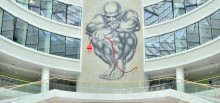
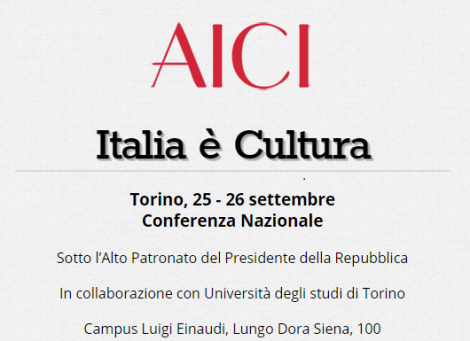 A very prominent conference is taking place in Turin on 25 and 26 september: ITALIA E’ CULTURA (Italy is Culture) organised by AICI (Association of Italian Cultural Institutions).
A very prominent conference is taking place in Turin on 25 and 26 september: ITALIA E’ CULTURA (Italy is Culture) organised by AICI (Association of Italian Cultural Institutions).
This conference will see, among its participants, the Italian Minister for Cultural Heritage and Activities and Tourism, along with representatives from the European Commission and from many important Italian Institutions.
The speech about RICHES, by Antonella Fresa, takes place in the afternoon of Day one, during the workshop entitled Culture in EU policies: Horizon 2020, Creative Europe (La Cultura nelle politiche dell’UE: Horizon 2020, Europa Creativa) moderated by AICI’s Secretary-general Carmine Marinucci.
Confirmed speakers of the workshop:
Fabio Donato, Università degli Studi di Ferrara, Italian Representative SC6 in H2020
Antonella Fresa, Promoter, presenting RICHES – Renewal, Innovation and Change: Heritage and European Society
Cristina Loglio, President at the technical table of Italian Ministry for Cultural Heritage and Activities and Tourism MIBACT
Leila Nista, presenting the initiatives of MiBACT for the European cultural policies
Luigi Perissich, ConfindustriaSIT, IPOC2 platform
Learn more about the event here: http://www.digitalmeetsculture.net/article/italy-is-culture-cultural-institutes-for-economic-development/
 RICHES on Twitter #richesEU
RICHES on Twitter #richesEU
RICHES on YouTube www.youtube.com/richesEU
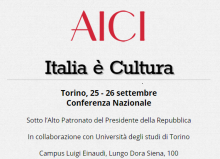
Promoter e FST disseminated Europeana Space and announce the project’s Opening Conference in Venice during an important event in Turin: ITALIA E’ CULTURA (Italy is Culture) organised by AICI (Association of Italian Cultural Institutions).
It was a prominent conference featuring the participation of the Italian Minister for Cultural Heritage and Activities and Tourism, along with representatives from the European Commission and from many important Italian Institutions.
Learn more about the event here: http://www.digitalmeetsculture.net/article/italy-is-culture-cultural-institutes-for-economic-development/
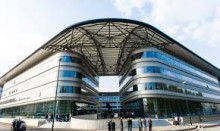
On 25-26 September, the national conference “Italy is Culture” organised by AICI (Association of Italian Cultural Institutions) was held in Turin, at Einaudi Campus. The event – where Dario Franceschini, Minister for Heritage and Cultural and Tourism Activities, and representatives from the European Commission and from important Italian Institutions intervened – was part of a series of initiatives taking place on occasion of the Italian Presidency of EU and followed 23-24 September’s assembly of Europe’s Cultural Ministries hosted by Turin’s Venaria Realm.
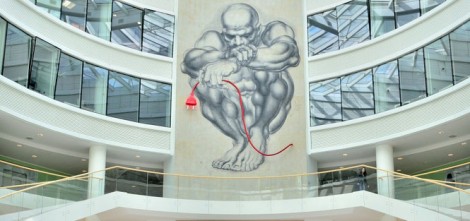 The conference aimed to give a strong signal about the potential of Italian culture and cultural institutions, which are undergoing a positive process of transformation and renewal: Italian culture has a strong vocation to social and technological innovation, to communicational experimentation, to internationalisation. Objectives to be achieved through synergic and multidisciplinary cooperation between the public and private sector for the benefit of Italian economic development.
The conference aimed to give a strong signal about the potential of Italian culture and cultural institutions, which are undergoing a positive process of transformation and renewal: Italian culture has a strong vocation to social and technological innovation, to communicational experimentation, to internationalisation. Objectives to be achieved through synergic and multidisciplinary cooperation between the public and private sector for the benefit of Italian economic development.
Italy is culture presented data and concrete proposals that will merge into a Charter of Culture for European Renaissance, baseline for the growth and identity preservation of Europe.
Event official website: http://italiacultura.aici.it/
Conference Programme
Thursday, 25 September
9.00 – 13.00
- Welcome speech by Dean of Turin’s University Gianmaria Ajani;
- Round table: New role for Italian private cultural institutes. Relationship with the policy for heritage and policy for university and scientific research. Chaired by AICI’s President Valdo Spini;
- Round table: The relationship between public and private bodies with the Cultural institutions and Foundations.
13.00 Lunch
14.30 – 17.30 Parallel professional workshops
- Culture in EU policies: Horizon 2020, Creative Europe. Moderated by Carmine Marinucci, AICI’s Secretary-general;
- Enterprise, job and culture. Moderated by Sergio Scamuzzi, Turin’s Gramsci Institute;
- Integrated cultural systems and digitisation. Museums, archives, academic libraries and libraries of cultural institutes; MAB network. Moderated by Daniele Jalla, Piedmont MAB (Musei Archivi e Biblioteche – Museums Archives Libraries)
- The Cultural Institutes between continuity and necessary innovations. Moderated by Giuseppe Sangiorgi, Don Luigi Sturzo Institute.
- Participation of the cultural institutes in the Great War’s celebrations. Chaired by Franco Marini, President of the National Committee for the First World War Centenary. Moderated by Andrea Ciampani Coordinator of AICI for the Great War.
19.00 Turin cultural itinerary and social dinner
Friday, 26 September
9.00 – Round table: Job and Innovation in the economy of culture. Chaired by AICI’s past president Franco Salvatori;
10.30 – Round table: Culture funding: what private/public/social mix for innovation? Chaired by Patrizia Asproni, president of Confcultura;
13.00 Conclusions;
14.00 End.
![]() The programme included the presentation of the volume Italia – Europa. Per una nuova politica della cultura (Italy – Europe. For a new culture policy) by Gabriella Nisticò, collecting the proceedings of the last two AICI’s meetings and containing the introduction to a survey on the AICI-affiliated Institutes and Foundations’ activities of the period 2011-2013.
The programme included the presentation of the volume Italia – Europa. Per una nuova politica della cultura (Italy – Europe. For a new culture policy) by Gabriella Nisticò, collecting the proceedings of the last two AICI’s meetings and containing the introduction to a survey on the AICI-affiliated Institutes and Foundations’ activities of the period 2011-2013.
Mario Caligiuri, Councillor for Culture and Cultural Heritage of Calabria Region and President of the Cultural Committee of the State-Regions Conference participated in Turin’s event; read his interview published on AICI’s website!
Download the detailed conference programme (Italian language) here
For more information visit www.aici.it
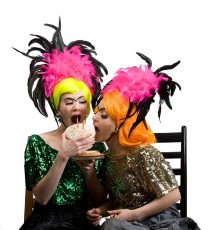
by Rosemary Cisneros, Coventry University
Levantes Dance Theatre is a Greek/UK company that has supported the Dance E-Space Pilot.
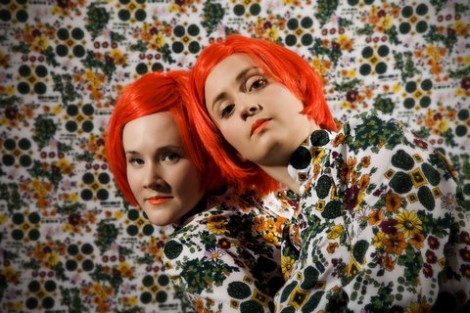 Award winning Levantes Dance Theatre consists of key practitioners Bethanie Harrison and Eleni Edipidi. Since April 2012 Levantes Dance Theatre are Associate Artists of Greenwich Dance based in London,UK.
Award winning Levantes Dance Theatre consists of key practitioners Bethanie Harrison and Eleni Edipidi. Since April 2012 Levantes Dance Theatre are Associate Artists of Greenwich Dance based in London,UK.
The company works primarily with Dance Theatre, with a constant enthusiasm for fusing artistic disciplines and indulging in vibrant aesthetics. The work is current, bold and honest. Intrigued by the draw of obscurity, the crux of work visually explores contradictions, blending and sinking into equal measures of the mundane and divine. Both the absurd and familiar are married together with set and costume, which in turn, are inhabited, developed, eaten, destroyed, worn, applicated and distributed within process.
They say: “We have a kitsch admiration for routine and value the body’s capacity to communicate in its most basic form. We wrap our audience in a cocoon of colourful activity striving to cushion their acceptance of an oddness, which in time melts into a viable element of the landscape.”
Learn more: http://www.levantesdancetheatre.org/
Images credit: The Camera Club, London and Foteini Christofilopoulou
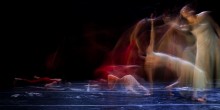
by Rosemary Cisneros, Coventry University
Europeana Space’ s Dance Pilot is experimenting new applications with different kinds of content, belonging to both Europeana and other digital collections such as the important archive of Siobhan Davies.
Next to this content, there are many artists supporting the Dance Pilot through offering dance videos.
Artistic Director of J Squared Dance Company, Jennifer Essex has recently contributed to the E-Space Dance Pilot.
Jennifer has supplied the Dance Pilot with content to test the Pilot’s applications and has been incredibly generous and supportive.
Jennifer says “In my work I try to break open the richness of human relationships through an exploration of language and metaphor. Drawing on contemporary iconography – video, film, fashion – my work is informed by a strong visual and theatrical sensibility. My current project, Distance Duet, uses the digital interactions of real couples as the source material to imagine new dance duets.”
More information here: http://distanceduet.tumblr.com/.
Website: www.jenniferessex.com
Images courtesy of Jennifer Essex and J Squared Dance Company


